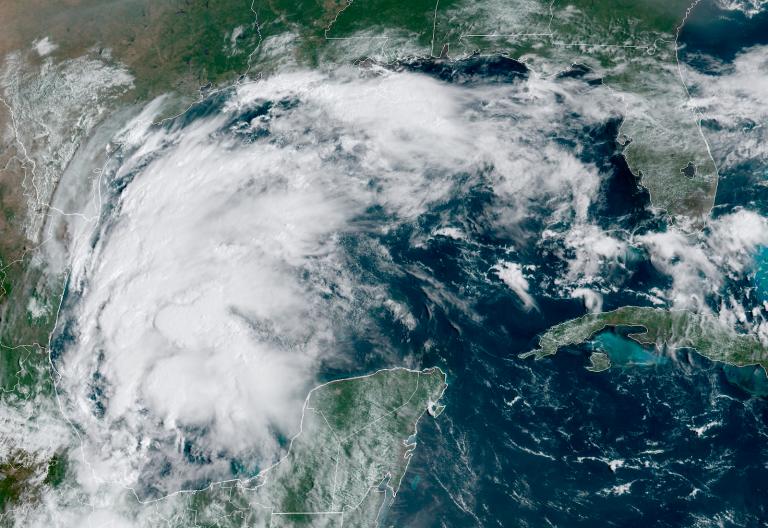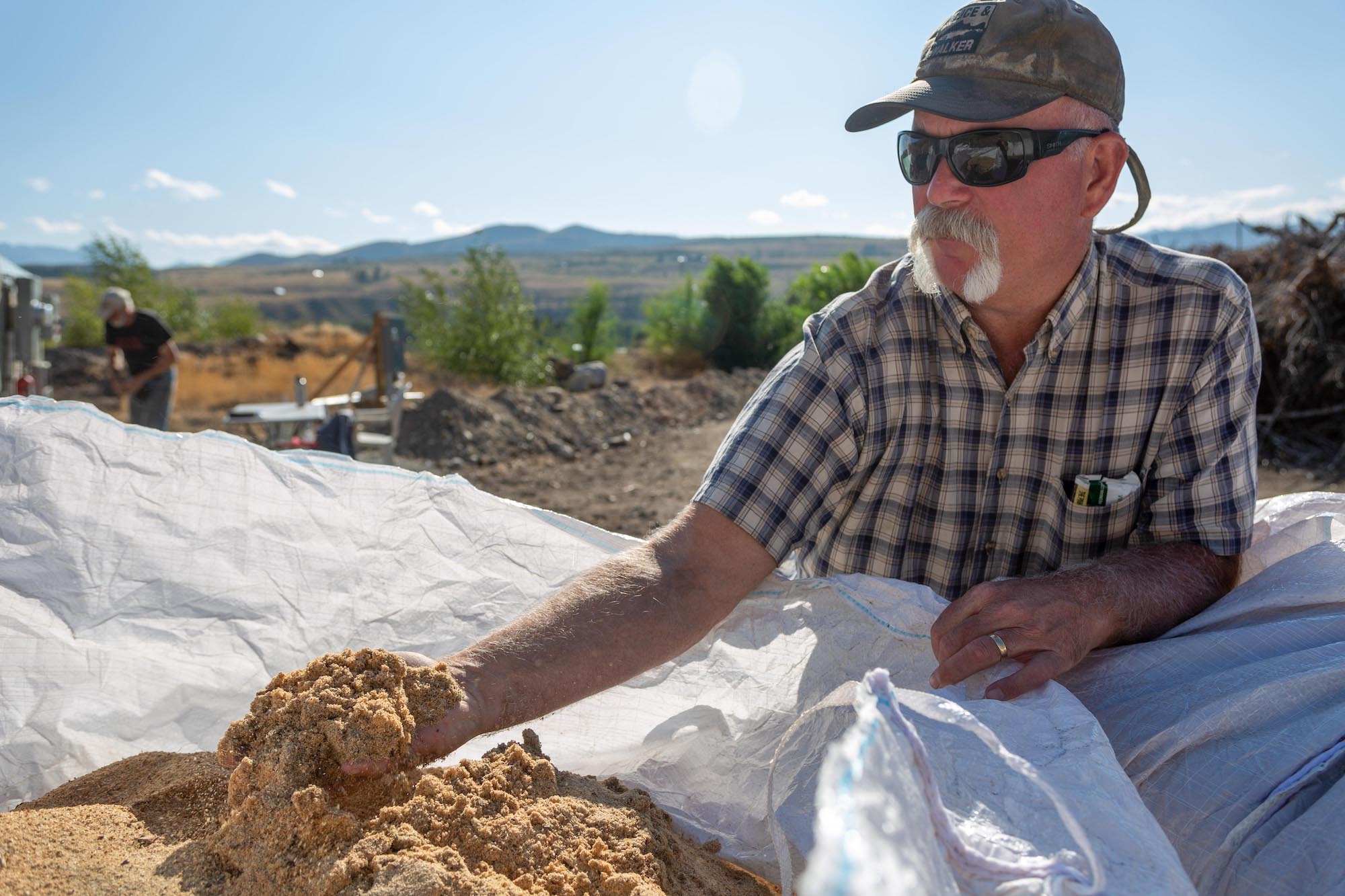This story is part of the series Getting to Zero: Decarbonizing Cascadia, which explores the path to low-carbon energy for British Columbia, Washington, and Oregon. This project is produced in partnership with InvestigateWest and other media outlets and is supported in part by the Fund for Investigative Journalism.
“We don’t live in the Methow anymore,” says Gina McCoy. “We live in Mordor.”
By the last week of July, there were fires burning on both sides of the Methow River. Air quality was bad enough to make the national news. In better times, Central Washington’s Methow Valley is a destination for world-class climbing, hiking and skiing. It’s remote. It’s beautiful. But like much of the West, it’s increasingly aflame.
On Aug. 20, for the first time, Gina and her husband, Tom McCoy, fired up a machine they believe offers the best chance to reduce catastrophic wildfires in their valley — while simultaneously combating climate change, improving air quality and providing local jobs that help keep the forests healthy.
Through C6 Forest to Farm, a nonprofit they founded last year, the McCoys plan to accelerate forest restoration by creating a local market for the small-diameter trees that are a symptom of unhealthy forests and fuel for giant fires. They’ll make biochar, a form of charcoal, from trees cut down during forest thinning. In doing so, the couple hopes to reduce emissions created by raging wildfires and the burning of slash piles.
The machine that was recently delivered to the McCoys from the University of California, Merced is a pyrolyzer, which creates biochar from organic matter. Technology for making charcoal is one of the oldest known to humans. Historically, it consisted of digging a hole and burning wood in it. In technical terms, the method by which the McCoys plan to create charcoal is called pyrolysis: heating wood chips or sawdust in a low-oxygen environment to 750–1,100 degrees Fahrenheit. Pyrolyzing wood releases about half the emissions of open burning; the other half of the carbon is stored in the resulting biochar.

Some large-scale pyrolysis methods require industrial-size facilities, but the research machine in the Methow is comparatively small: It fits on the back of a 5-by-5-foot trailer and now resides in a defunct 22-acre gravel pit owned by Okanogan County and is a short walk from the McCoys’ home. The McCoys plan on hosting regular public demonstrations soon. Their goals for this year are to make biochar from a slash pile left by a state restoration project, and from a 10-foot-high pile of woody debris that’s occupied the gravel pit since it was collected by the county during routine road-clearing operations.
Research suggests biochar can persist in soil for hundreds of years. This makes it a potential tool in the fight against climate change, especially when made from materials like thinned trees or agricultural debris that, if burned, release stored carbon into the atmosphere. Biochar gained recognition in the early 2000s when scientists published findings about charcoal that was purposefully created by Indigenous people of the Amazon region to incorporate into their soil. The soil, which researchers called terra preta,or “black gold,” held large amounts of carbon that contributed to the richness of nutrients and plant life.
In the decades since that study, many would-be biochar entrepreneurs have tried and failed to stay afloat in what remains an undeveloped market. But new uses for biochar and new ways of funding carbon storage are now emerging.
After years of wildfires at their doorstep, the McCoys decided to devote themselves to creating a product that could help finance forest restoration as well as carbon storage. Their ultimate dream is to build a multimillion-dollar processing plant that will turn thousands of tons of woody material into biochar each year. This spring, the Washington Legislature took a chance on their pilot project by granting them $160,000 in state funds, to be paid out over the next two years.
“These are the types of things that the state should give a nudge of support to,” says Sen. Brad Hawkins, who submitted the project for funding from the Legislature. This is especially true, he says, considering how many millions of dollars the state already has spent fighting wildfires.
The goal: forest restoration
In the couple’s backyard, in the shade of a hoop house, Gina crunches a stalk of homegrown dill. Tom points across the valley to a neighbor’s property where they watched a fire start in 2014, a fire that eventually consumed 11 homes. There are three routes in and out of the valley, and that year, fires temporarily closed all three. They say many neighbors have begun leaving the area during the summer fire season.
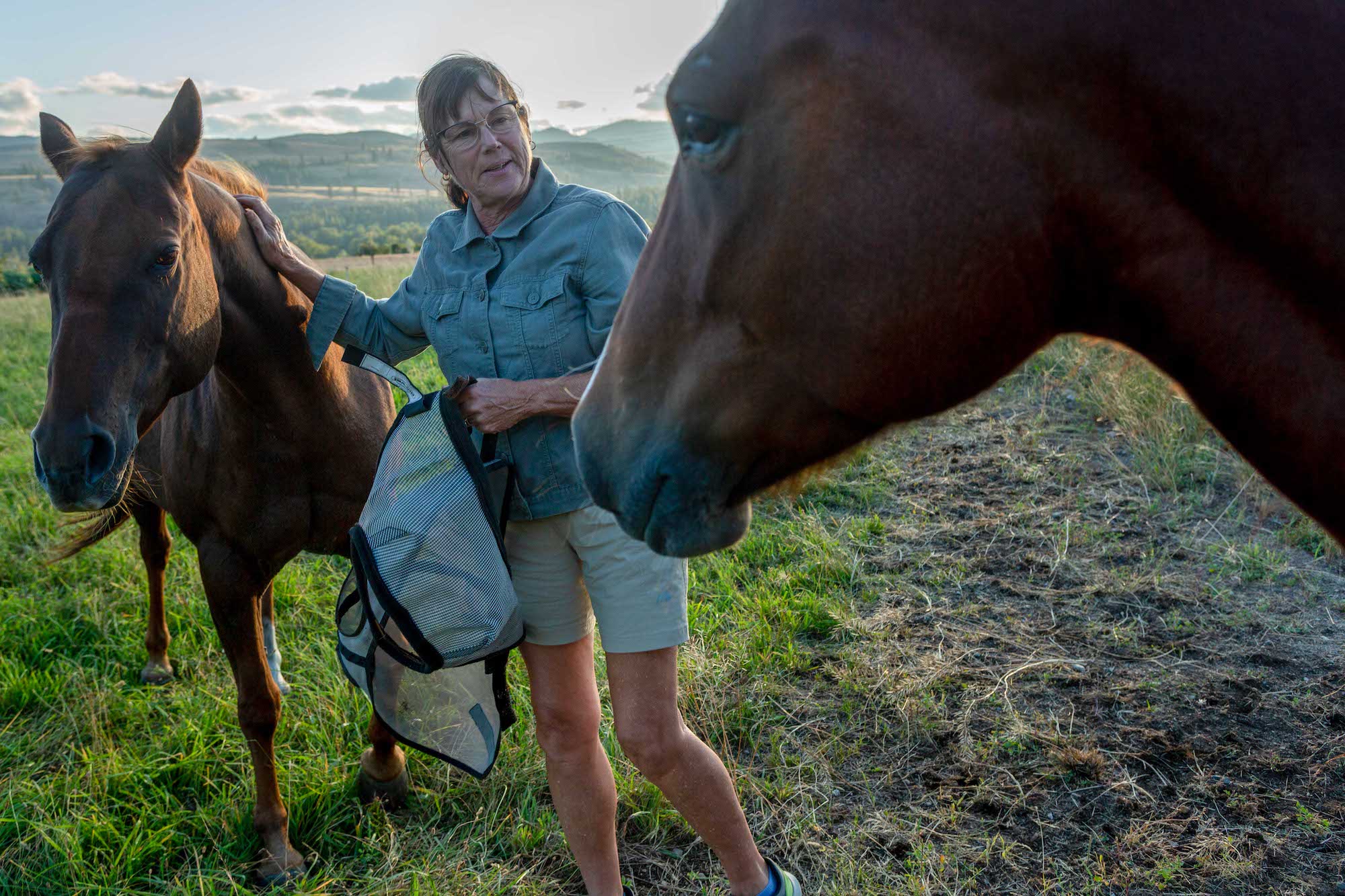
Climate change has contributed to the problem, drying out vegetation and making it more flammable. But a 100 years of fire suppression wildly overstocked the forest with unhealthy trees. After catastrophic fires in the inland West burned 3 million acres and killed 87 people in 1910, the U.S. Forest Service adopted a policy of putting out every spark. By 1935, the agency had implemented the “10 o’clock” rule, stipulating that any observed fire had to be extinguished by 10 the following morning.
Between natural lightning strikes and intentional burns ignited by Indigenous people, dry forests in an area like the Methow Valley historically endured low-intensity fires every 7–15 years. These fires cleared the underbrush and younger trees, making the Methow of olden days look like parkland, with stately ponderosa pines spaced far enough apart to let in sunlight.
The consensus among scientists is that trees in the Methow Valley need to be removed much faster than is now being done. State and federal governments are enthusiastic about doing this — at least on paper. They call this “forest health treatment,” which typically involves leaving bigger trees standing while cutting and piling up the smaller ones into slash piles that are burned in the winter. But the rate of this thinning depends on government funding, and although agencies no longer follow the 10 o’clock rule, a ballooning portion of agency budgets are still directed toward firefighting, leaving little left over for restoration.
“I’ve become really impatient about the pace and scale of those [forest health] treatments,” says Susan Prichard, a Methow Valley resident and fire ecologist at the University of Washington. “A good portion of that work is being done by wildfires themselves.”
Prichard is a lead author of a set of three articles released in August in the scientific journal Ecological Applications. In a review of literature on the subject of wildfire management, dozens of collaborating scientists affirmed that forests need to be thinned, and that low-intensity fires need to be reintroduced in prescribed burns.
Of the watershed surrounding the Methow Valley, 84% is federally owned; you can’t drive far without being welcomed into one national forest or another. Another 5% is state owned. For the people who live on private property, decades of forest management practices, largely beyond their control, now threaten their livelihoods and property.
A January 2019 article in the Methow Valley News about the valley’s risk for fire damage spurred Gina to think about what they could do about it. The fact that she was sitting at home with two sprained ankles during ski season helped the thought process. She knew the density of the forests was the prevailing issue, so she ordered a textbook on biomass processing and started figuring out what could best help their area.
Instead of starting a business by looking at the landscape and asking what it could do for them, the McCoys began by asking what they could do for the land. It was natural for them to take this approach: Both had long careers in landscape ecology and were used to thinking about problems on a watershed scale. They met in the 1980s, when Gina went to work for the Yakama Nation a month after Tom did. He was a wildlife manager; she was a watershed manager. Her last job before retirement was as a fluvial engineer for the Washington Department of Fish and Wildlife, and his was as the manager of the 34,600-acre Methow Wildlife Area. In that job, Tom saw firsthand what fire suppression had done to the landscape and how much thinning was required.
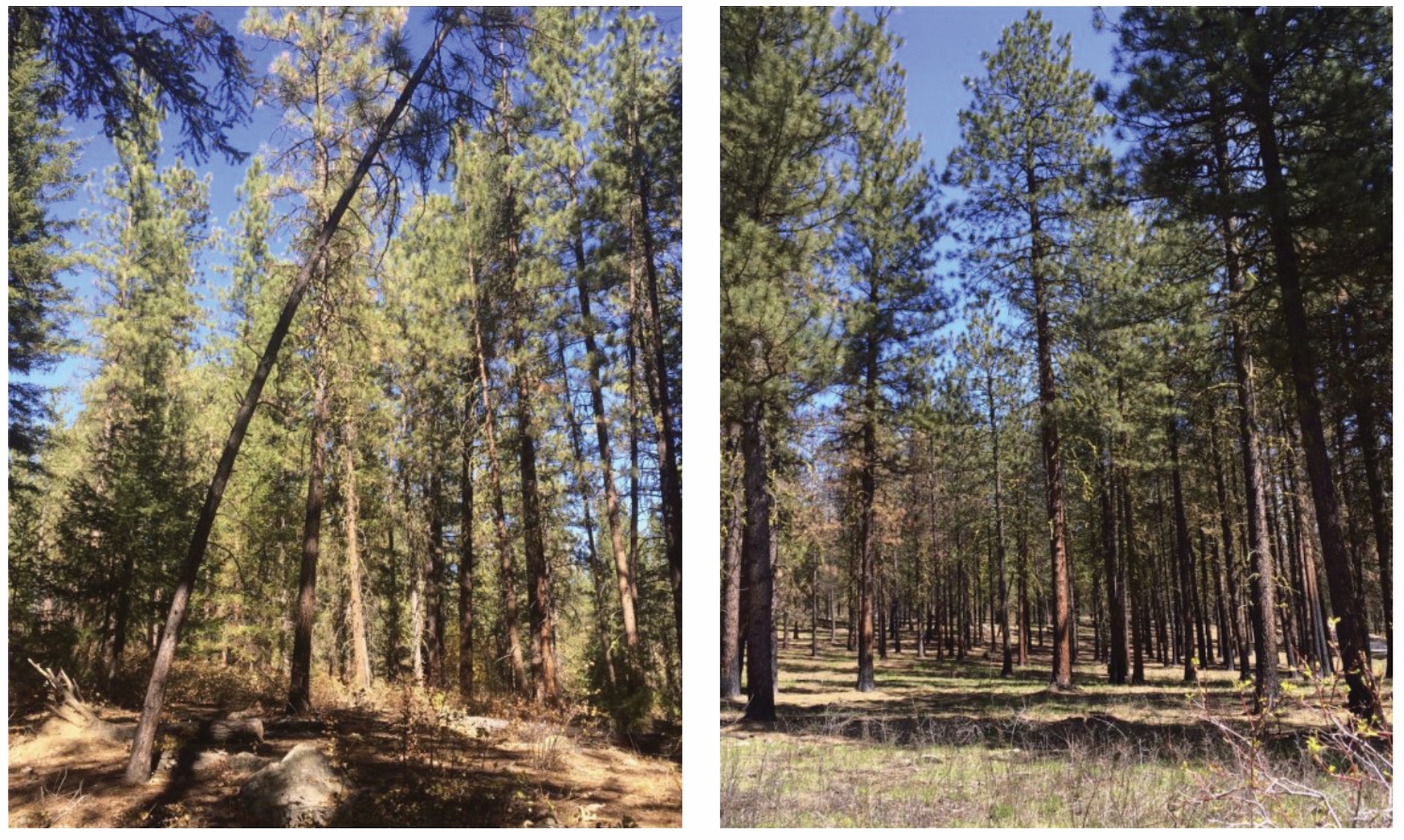
The economic landscape
A major impediment to thinning is the low value of small-diameter trees in the commercial timber market. And the Methow Valley doesn’t have a mill. To be turned into a useful product, small trees need to be trucked to the nearest mill in Kettle Falls, about 150 miles away. Economically, the math doesn’t work. Loggers would spend about twice as much money harvesting and transporting timber as they would get from a mill.
This prevents forest restoration from occurring quickly, a point that the state Department of Natural Resources (DNR) explicitly tried to address in its 20-Year Forest Health Strategic Plan. The agency hopes to stimulate private investment in new products made from forest-thinning by-products, and biochar projects are just one of several possibilities. For example, Vaagen Timbers, a mill in northeast Washington, is using remnants from thinning the Colville National Forest to create cross-laminated timber, which can replace steel and concrete in offices and apartments.
“The more opportunity there is to create value-added products from what is right now essentially a waste material, the more it’s going to improve conditions on the ground, reduce the risk of these catastrophic wildfires, and better prepare the forest for drought,” says Andrew Spaeth, a DNR environmental planner who helped write the 20-year plan.
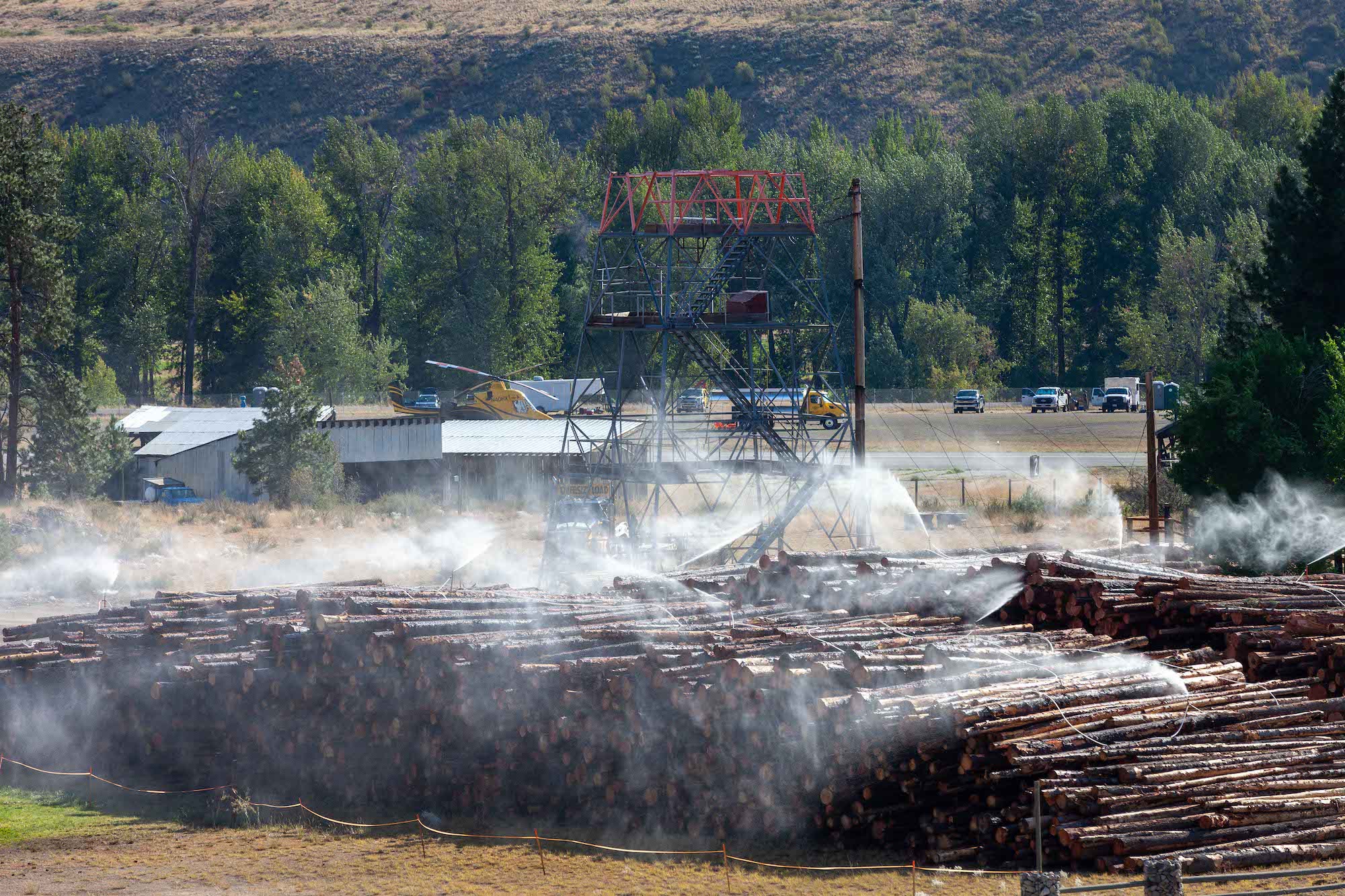
Tom hopes to soon produce 6,000–7,500 tons of biochar per year, “a football field 20–30 feet deep.” The next step would be to determine how to utilize and sell the biochar.
After research on terra preta popularized it, many businesses leapt to market their own versions of biochar, with sales pitches that spoke glowingly of its ability to increase crop production. Biochar is still often sold as a soil amendment, and it can increase yields when added to some kinds of soil. But not all biochar is created equal. It can be made out of any organic compound, from rice to tires, and not all soils have equal use for it.
Margins for farmers are razor-thin, and many are hesitant to bet on an unproven product. Research is ongoing, but a 2019 report from Washington State University concluded that there’s economic justification for Pacific Northwest farmers to use biochar only with one type of crop —vegetables — unless they’re also paid to sequester carbon as biochar. At the national level, the Department of Agriculture’s Natural Resources Conservation Service (NRCS) is running a three-year pilot program doing just that, paying farmers to use biochar as a soil supplement. States can opt into this program, but Washington has yet to do so.
The first wave of enthusiasm for biochar didn’t consider how different source materials would affect the outcome. Conversely, the McCoys want to create what they call “designed biochar,” charcoal made from the specific materials, primarily ponderosa pine and Douglas fir, and intended for specific purposes. They’re still hopeful about its potential as a soil supplement, and Tom says that if Washington were to opt into the NRCS pilot program, that money alone could cover most of their expenses.
For now, C6 is operating on funding from the Legislature and private donations, although it’s also exploring the state’s carbon offset program, born this year as part of cap-and-trade legislation. Carbon offsets give monetary value to the carbon-storing abilities of something like a forest and allow people to buy credits that support it. Sometimes individuals or companies voluntarily buy offsets, but in states with carbon regulations, large polluters often purchase offset credits to compensate for their own emissions.

So far, offsets have had dubious success. A joint investigation by MIT Technology Review and ProPublica in April revealed that California’s offset program, on balance, may have added carbon to the atmosphere because of faulty methods used to account for the carbon stored in forests. Accurately calculating the carbon stored in soil is extremely complicated, and marketplaces that claim to measure it and sell credits are still fairly new. Still, some companies are trying to legitimize this process. Carbofex, a Finland-based company that creates biochar out of by-products from commercially managed European forests, uses it as a soil supplement or for water filtration, and sells offset credits on the Puro.earth marketplace. Washington legislators attempted to address concerns about offsets by making them a “bonus” when tallying lowered emissions. That is, companies can still purchase offsets, but unlike in California, offsets don’t eliminate requirements that polluters decarbonize their operations.
Regardless of whether they’re able to join an offset market, the McCoys are considering using the biochar for water filtration, as compost or potting mix, or in a new form of pavement that an Australian company is making from biomass. They’re exploring all avenues, agnostic about the exact use, hoping that within a year they’ll have products that at least pay for the cost of making them.
For the McCoys, biochar production is a way of dealing with the scale of the forest health problem in the short time they feel remains; that is, before another western megafire makes these questions moot. Research from the University of Washington suggests forests in the Sierra Nevada of California could, in an intense burst, burn for another decade or so, but then cease because there won’t be many trees left. The McCoys believe that this could happen in the Methow, too.
With the drought that’s settled over the inland West, it’s not likely that trees lost to wildfire will return anytime soon. Research from the University of Montana indicates many ponderosa pine and Douglas fir forests will no longer regenerate after fires as they once did, suggesting that mature trees in these forests are now essentially nonrenewable resources.
“If we can stop just one fire from becoming catastrophic, it will have been worth it,” Tom says.
He means it sentimentally, but also economically: The state spent $60 million fighting the
250,000-acre Carlton Complex fires of 2014 in the Methow Valley. Tom estimates that $60 million could run their biochar project for decades. As for effects on the climate, wildfires were the second-largest single source of carbon emissions in Washington in 2015, following only the transportation sector.
“The forest health treatments are expensive, but not compared to fire suppression, property damage and the cost to the climate,” Gina says.
The McCoys started their company as a nonprofit, an unorthodox decision for a venture dealing in industrial chemistry, and they clearly hope they can provide a model for others across the West to create local versions of the same thing.
“If the economy, the way we have it structured, does not value our forests or our climate, what good is that economy?” Gina asks. “Our profit is the valley we love.”
